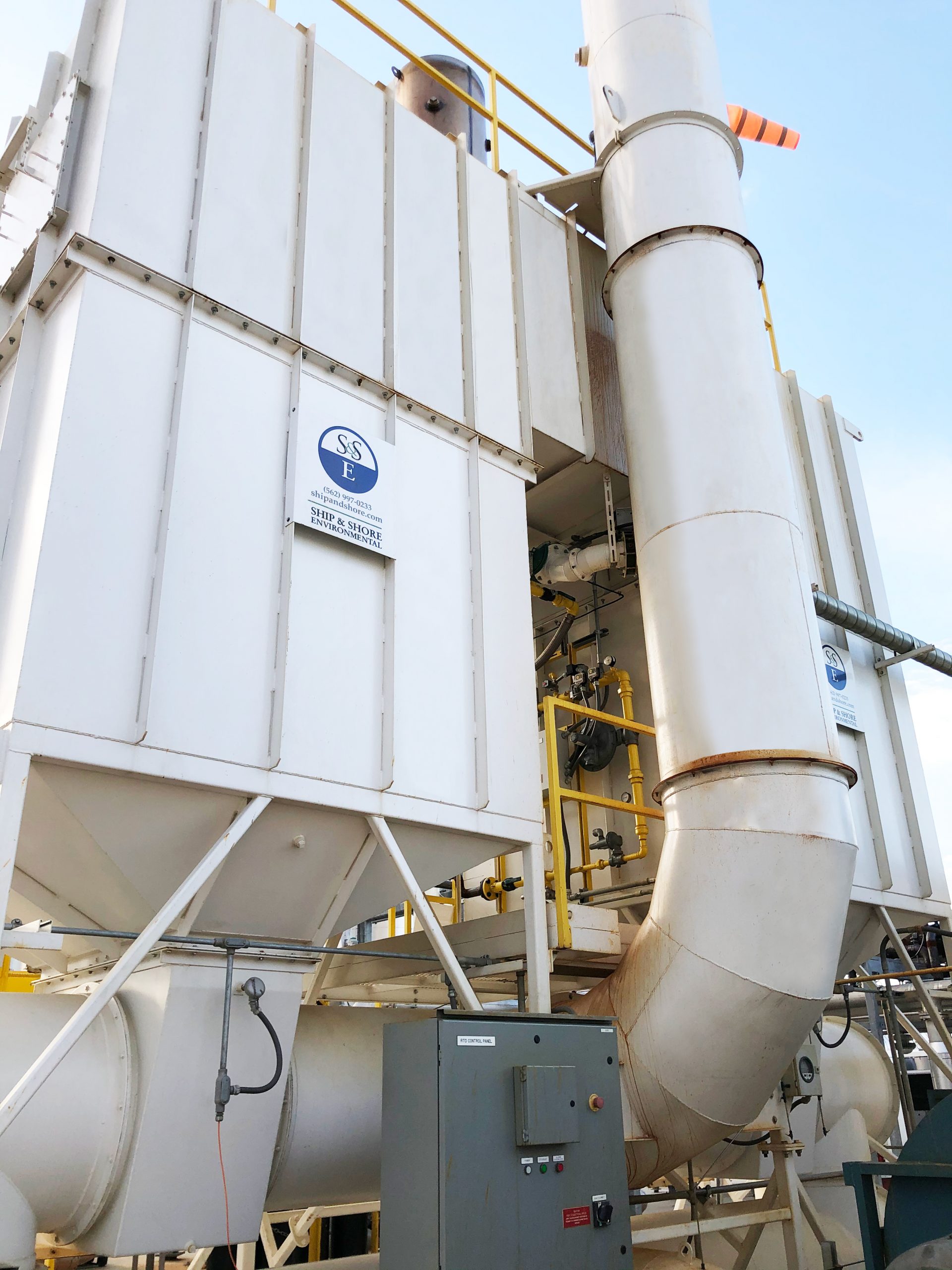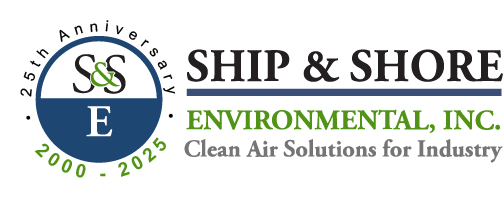INTRODUCTION
Ship & Shore Environmental was engaged by a company involved in the upgrade of landfill gas (LFG) to pipeline quality through a Pressure Swing Adsorption (PSA) process. PSA for the production of Renewable Natural Gas (RNG) produces a broad range of contaminants in the tail gas removed from the raw landfill gas. The process also varies widely in volume as well as heat content due to the semi-batch nature of the operations.
As a leading technology provider, Ship & Shore Environmental has vast experience in VOC abatement from Biogas facilities and other manufacturing processes. RNG is made from a variety of sources including landfill gas, anaerobic digestion of wastewater, and digestion of animal or municipal solid waste.
BACKGROUND
- The process utilized by the PSA provider included heat content variations from 230 BTU/lb to 1,840 BTU/lb
- Process flow from the system varied from 200 CFM to 1,500 CFM over the course of 4-hour cycles
SOLUTION
- Upon evaluation by our experienced engineers at the client’s facility and process information, S&SE designed a 15,000 SCFM Regenerative Thermal Oxidizer (RTO) with a hot gas bypass arrangement. The unit was custom engineered to fit the customer’s requirements based on their process, production, hours of operation and the amount of VOCs they were emitting. All systems manufactured at the Ship & Shore facility are exclusive and custom made for our customers with respect to their needs.

- The 15,000 SCFM Ship & Shore RTO was designed to provide 98% VOC destruction at an operating temperature of 1500°F (815oC). The RTO consists of two insulated media chambers where the thermal ceramic heat transfer media was topped with Silica resistant material due to the presence of Siloxanes in the stream. Process exhaust passes through the ceramic beds in the chamber which has 95% thermal effectiveness to capture the heat from the contained combustion process. Therefore, the natural gas usage to operate the RTO will be minimal. Also, in many cases the RTO is self-sustaining which means the RTO requires no natural gas consumption to operate.
- The unit includes a specially designed switch-type poppet valve, an integral component of the system, which helps provide a thermal efficiency of 95%. This poppet valve, special-designed by one of our most experienced engineers having served this industry for more than 30 years. Poppet valve switches the air flow alternatively to both the media chambers utilizing both heat recovery bed completely, thus providing maximum efficiency.
- Excess heat from the combustion chamber is vented by the hot gas bypass system during periods of high VOC loading. Quite often this heat energy can captured from the main stack and used to provide heat for the facility especially during winters. The use of 95% heat recovery media chambers combined with the hot gas bypass system, helped the customer save a significant amount of operating costs.
- S&SE was able to capture maximum fugitive emissions from the process providing maximum efficiency, thus helping the company lead to a cleaner and greener environment.
CONCLUSION
Ship & Shore Environmental heavily involved with the RNG industry on many levels. First, as an engineering partner, providing advice and technical support to our clients when air regulations need to be addressed which may include meeting with regulators. Second, as an equipment provider, we develop technical solutions that will meet VOC collection requirements, abatement regulations, as well as safety concerns. Safety concerns are Ship & Shore’s number one focus.
Ship & Shore has been designing and fabricating VOC abatement systems for the Biogas industry for years and has served numerous companies in the RNG industry. Each abatement system is custom-designed to meet the unique requirements of each facility and the local air quality requirements. We strive for the best available technology for each application, rather than forcing one system over another based on our product line. By doing so, we always keep safety, economics, as well as feasibility of a system in mind before we make a recommendation.

